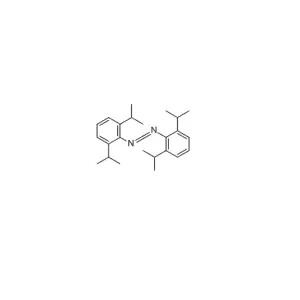-
What is the range of UV absorbers?
UV absorbers, also known as UV filters or sunscreens, are compounds used to protect various materials from the harmful effects of ultraviolet (UV) radiation. One such UV absorber is UV234, which is a popular choice for providing protection against UV radiation. In this article we will explore the...Read more -
Hydrolysis Stabilizers – The Key to Extending Product Shelf Life
With the continuous development of modern industry and technology, the application of chemicals in daily production and life is becoming more and more extensive. In this process, an indispensable role is hydrolysis stabilizer. Recently, the importance of hydrolysis stabilizers and their applicati...Read more -
What is bis phenyl carbodiimide?
Diphenylcarbodiimide, chemical formula 2162-74-5, is a compound that has attracted widespread attention in the field of organic chemistry. The purpose of this article is to provide an overview of diphenylcarbodiimide, its properties, uses, and significance in various applications. Diphenylcarbodi...Read more -
A high performance Phosphite Antioxidant for Polymer processing
Antioxidant 626 is a high performance organo-phosphite antioxidant designed for use in demanding production processes to make ethylene and propylene homopolymers and copolymers as well as for the manufacture of elastomers and engineering compounds particularly where excellent colour stability is ...Read more -
What are the fluorescent whitening agents in plastics?
Plastic is widely used in various industries due to its versatility and low cost. However, a common problem with plastics is that they tend to yellow or discolor over time due to exposure to light and heat. To solve this problem, manufacturers often add additives called optical brighteners to pla...Read more -
What are optical brighteners?
Optical brighteners, also known as optical brighteners (OBAs), are compounds used to enhance the appearance of materials by increasing their whiteness and brightness. They are commonly used in a variety of industries, including textiles, paper, detergents and plastics. In this article, we’ll expl...Read more -
What is the Difference Between Nucleating Agents and Clarifying Agents?
In plastics, additives play a vital role in enhancing and modifying the properties of materials. Nucleating agents and clarifying agents are two such additives that have different purposes in achieving specific results. While they both help improve the performance of plastic products, it is criti...Read more -
What is the difference between UV absorbers and light stabilizers?
When protecting materials and products from the harmful effects of sunlight, there are two commonly used additives: UV absorbers and light stabilizers. Although they sound similar, the two substances are actually quite different in how they work and the level of protection they provide. As the n...Read more -
Acetaldehyde Scavengers
Poly(ethylene terephthalate) (PET) is a packaging material commonly used by the food and beverage industry; therefore, its thermal stability has been studied by many investigators. Some of these studies have placed emphasis on the generation of acetaldehyde (AA). The presence of AA within PET ar...Read more -
Methylated Melamine Resin
Nanjing Reborn New Material Co., Ltd. is a well-known supplier of polymer additives in China. With the rising demand for polymer-based products, Nanjing Reborn has been committed to providing high-quality crosslinking agent Methylated Melamine Resin. Melamine-formaldehyde resin is a kind of in t...Read more -

The Importance of Hydrolysis Stabilizers and Anti-Hydrolysis Agents in Industrial Applications
Hydrolysis stabilizers and anti-hydrolysis agents are two critically important chemical additives in industrial applications that help to counteract the effects of hydrolysis. Hydrolysis is a chemical reaction that takes place when water breaks down a chemical bond, lead...Read more -
Fire-retardant Coating
1.Introduction Fire-retardant coating is a specialty coating that can reduce the flammability, block the rapid spread of fire, and improve limited fire-endurance of the coated material. 2.Operating principles 2.1 It is not flammable and can delay the burning or the deterioration of materi...Read more

